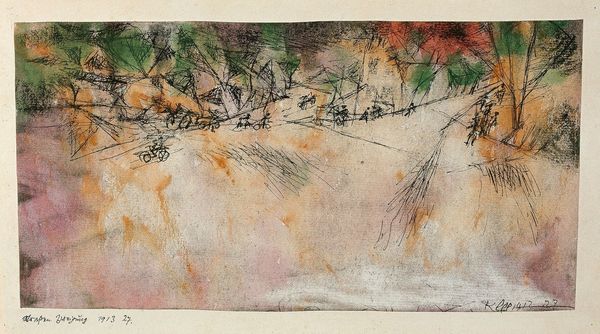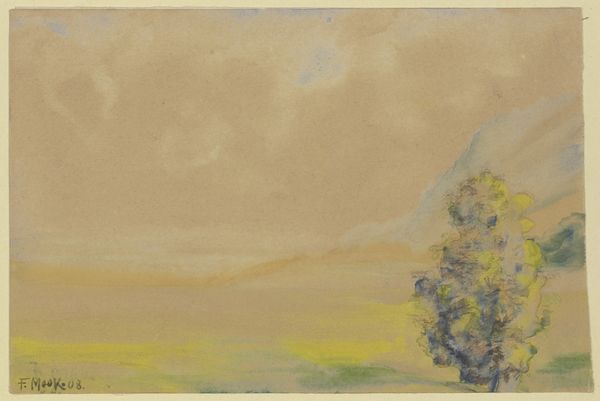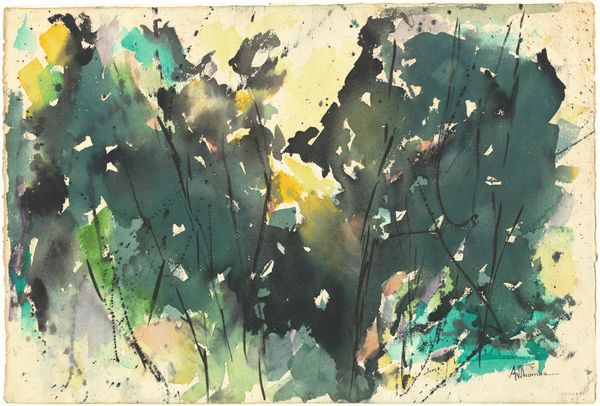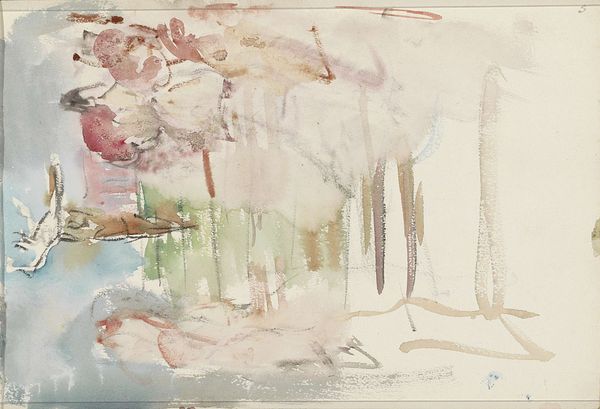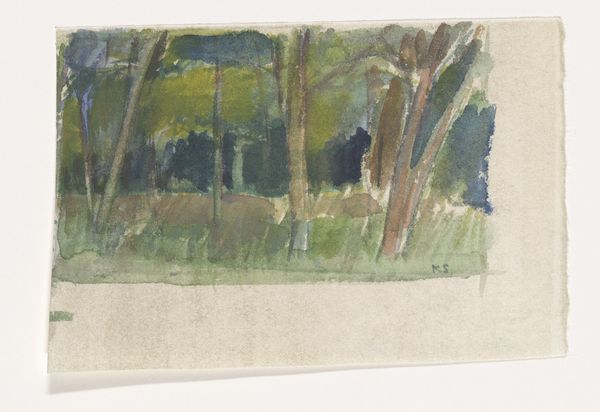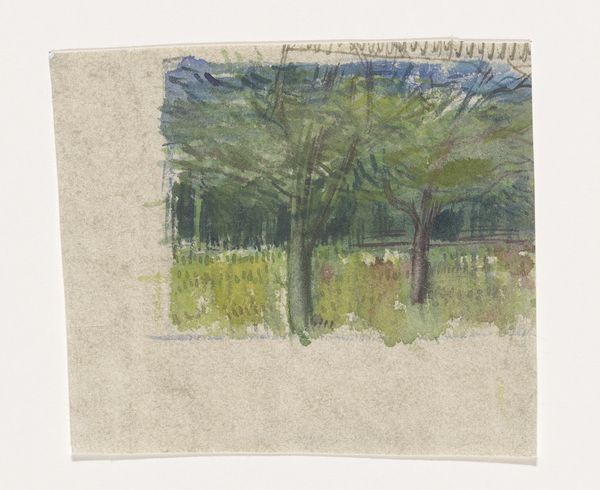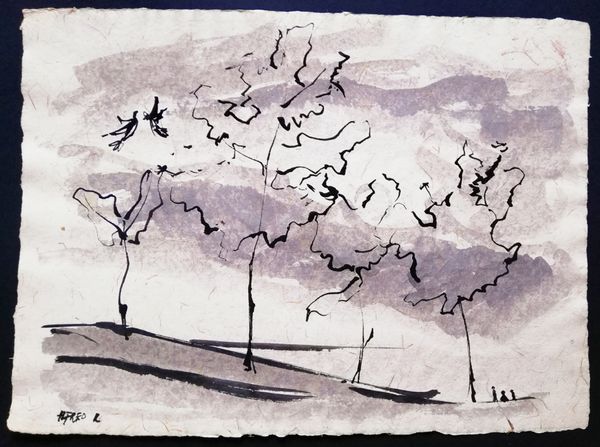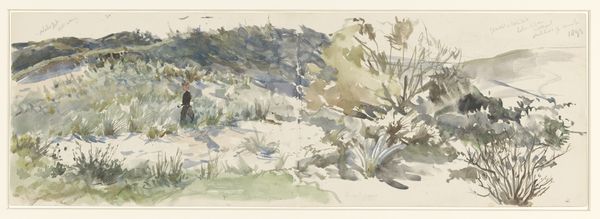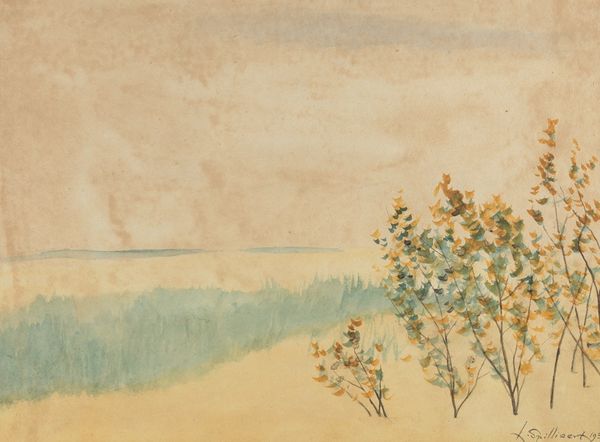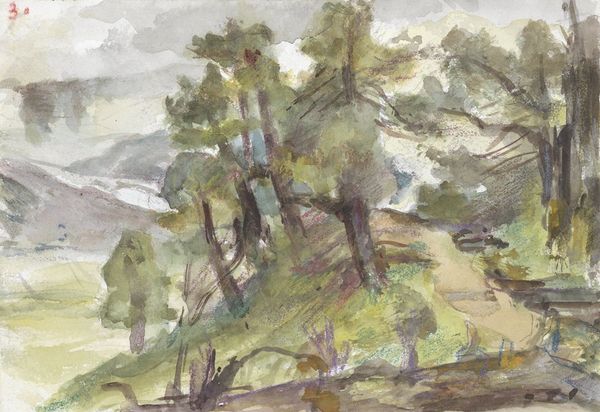
drawing, plein-air, watercolor
#
drawing
#
water colours
#
plein-air
#
landscape
#
watercolor
Dimensions: height 130 mm, width 302 mm
Copyright: Rijks Museum: Open Domain
Editor: This watercolor, "Bomengroep," possibly from 1959, by Dirkje Kuik, feels so light and airy. It's like a quick impression captured *en plein air.* What do you make of it? Curator: Well, situating Kuik’s “Bomengroep” within its historical context, the late 1950s, prompts an interesting discussion. After the reconstruction period, there was a renewed interest in representing nature, often as a serene escape from urban realities. Do you think this aligns with that sentiment, considering the loose, almost dreamlike quality of the piece? Editor: I see what you mean. The sketchy lines and soft washes definitely give it a sense of tranquility, maybe even nostalgia? But how much does the medium itself—watercolor—play into that feeling? Curator: Precisely. Watercolor, traditionally viewed as a ‘lesser’ medium, gained prominence through its portability and association with direct observation. Works created *en plein air* shifted away from academic grandiosity towards immediacy, capturing transient moments. We must ask, who got to represent "nature" at this moment, and where did it circulate? What message did it send? Was it radical? Editor: That’s fascinating. I hadn't thought about the social aspect of choosing watercolor. Now it seems like it's both a stylistic and a political statement, somehow. Curator: Indeed. It pushes us to think beyond the surface aesthetics, considering the broader art world dynamics of the time and the subtle ways artists could participate in defining or critiquing cultural values. Do you find your perception of the work has altered by considering the politics and practices circulating at the time? Editor: Absolutely. Knowing about the historical and social contexts makes the image more engaging and helps it come alive. Curator: It also compels me to question who was being represented in these landscapes, how labor might intersect within them, and whether those at play in the economic exploitation of the region have presence here.
Comments
No comments
Be the first to comment and join the conversation on the ultimate creative platform.

